Friday, February 17, 2012
Saturday, February 11, 2012
Old Fashioned Lacto-Fermented Sauerkraut
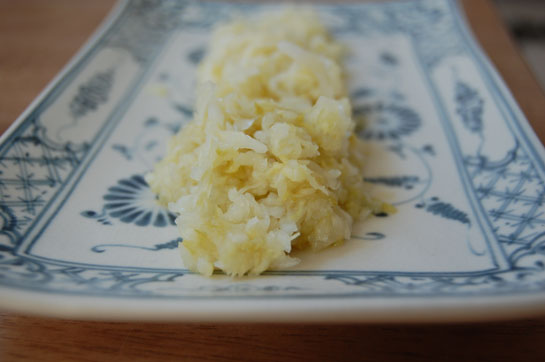 Old Fashioned Lacto-Fermented Sauerkraut
Old Fashioned Lacto-Fermented Sauerkraut Tangy, crisp, flavorful sauerkraut is so refreshing on a hot day! It makes the perfect side to many grilled meats. Culinary benefits aside, it’s also healthy for you! In my recipe, I share a little secret that makes for a no pound sauerkraut. No more pounding your cabbage for 15 minutes in this recipe! It’s so easy.
This is the crock method (read about the different methods here) but I am doing it without the crock as I still haven’t decided what I want to buy. Meanwhile, I can make a mean sauerkraut with a big nonreactive bowl (I use glass) a plate, and something to weigh it down.
I find that sauerkraut made in the mason jar method just doesn’t taste right to me, but this? Oh… my…. lands (as my great grandparents would say), I could definitely eat a huge bowl of it in one sitting! It has just the right amount of tangy sourness.
And guess what? You only need cabbage and salt to make it! This is one of the most frugal ways to get beneficial bacteria (probiotics)! Most sauerkraut in the stores is no longer fermented but made with vinegar and the lacto-fermented versions are generally a little over our budget.
And speaking of frugality, don’t forget about Pennywise Platter Thursday coming up!
So here we go!
Old Fashioned Lacto-Fermented Sauerkraut
- 5 Pounds Cabbage (about two heads, organic preferable)
3 1/2 tablespoons coarse sea salt (unrefined)
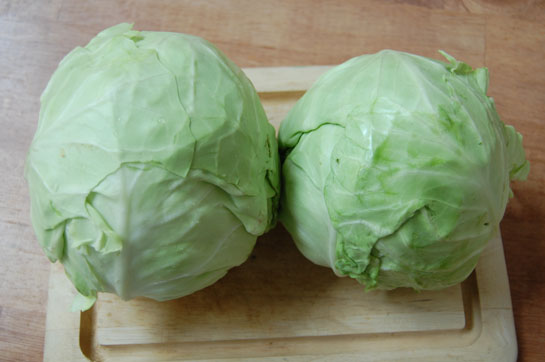
First make sure that all dishes used for this project are very clean. You will need a crock or a large non-reactive bowl, such as the glass one I used, a plate that fits snugly inside and something to weigh the plate down. I used a food grade plastic bucket full of water, a mason jar full of water, another bowl full of water, or a jug full of water, are all options.
1-Shred cabbage (if you have one, a food processor makes this step a cinch) and place in the bowl or crock you will be fermenting in. Toss with the salt and cover with some kitchen towels. Leave for 15 minutes to an hour to allow the salt to draw out the juices of the cabbage. This is the secret that makes this recipe pound free. I learned it in a Russian cookbook.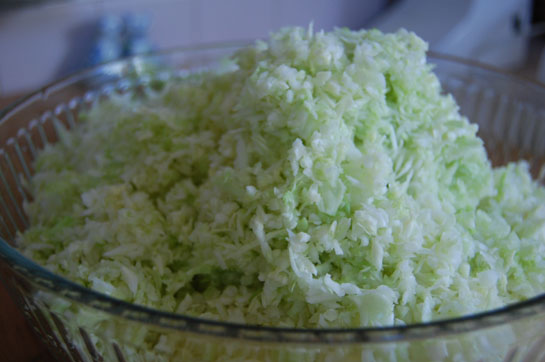
2-Using a mallet, or whatever you have on hand gently pound the cabbage down so that it’s tight fitting in the bowl. Place the clean plate on top and weigh it down with whatever you are using for the purpose. Press down gently, but firmly. The liquid from the cabbage should rise to the top. You will want the liquid to cover the plate with room to spare within in 12-24 hours. If it hasn’t risen above the plate by that point, make up some salt water my mixing one cup of filtered water with one teaspoon of sea salt and use as much as you need. Cover with kitchen towels or a clean pillow case to protect it from flies and dust.
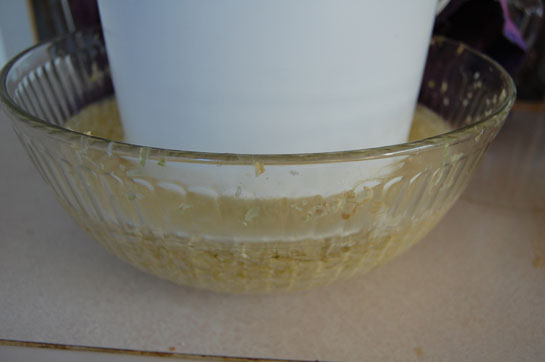
3-Each day you will remove the plate, and rinse it. If there is any “scum” on the surface of the water, remove as you much of it as you can with a spoon. Start tasting the sauerkraut after a few days. It will start to sour within a few days and will continue to “ripen” as the days go on. How quickly it ferments will depend on the temperature of your house. We like it after about ten days. Before that point, we just think it lack the depth of flavor we want. But the lovely thing is that you can stop the fermentation process when it tastes good to you.
4-When it’s fermented enough for your taste, Bottle it up in clean mason jars, and place in the refrigerator where it will keep for a long time.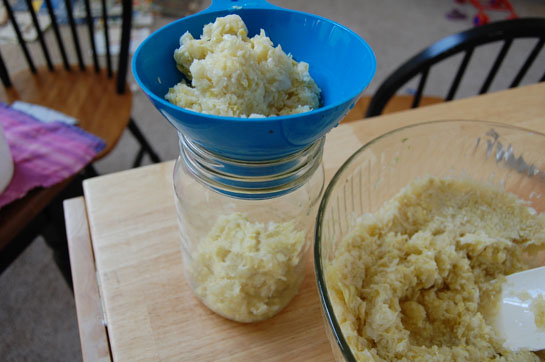
And that’s it!
More resources:
Wild Fermentation’s Crock Method (the same as above)
Trouble Shooting
Tagged as: Cabbage, Dairy Free, Gluten Free, Grain Free, Lacto-Fermented Foods, Nourishing Frugal Recipes,Nourishing Frugal Tips, Vegan, Vegetarian